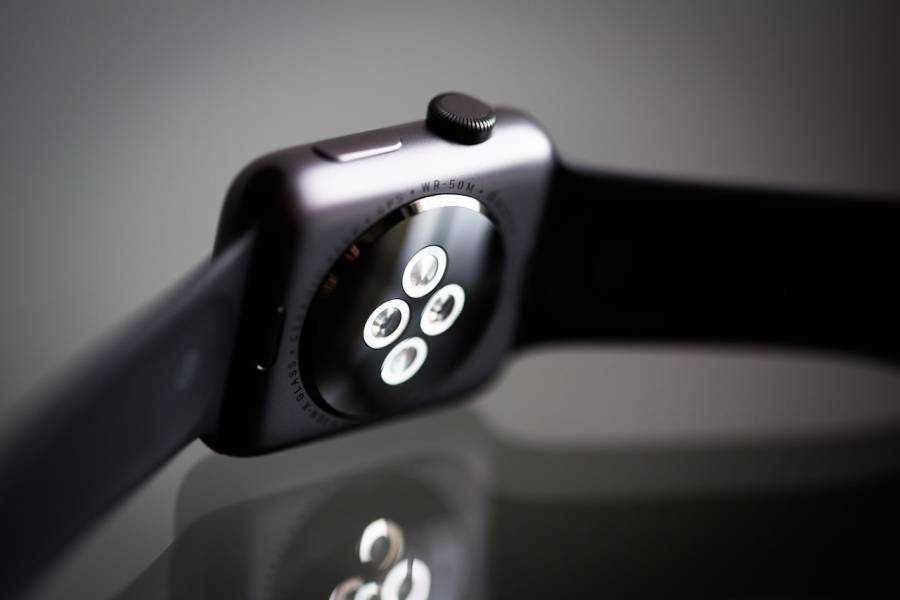“Early detection saves lives” is a popular phrase that signifies how important monitoring, scans, and proactive measures are in detecting and treating diseases. Across the board, any illness or chronic condition benefits from early detection. For example, when caught early, colon cancer has a 95% five-year survival rate; however, if caught late, that survival rate drops to 11%. In New York, early disease prevention returns $7 for every $1 spent, making it both a national economic and personal health issue.
While traditional screens, scans, and tests are essential, modern-day medical technology has also handed power directly to consumers. From influenza to sleep tracking rings, consumers can track their activity and control their health proactively. As part of this trend, the wearable technology market is, also, expected to hit $156 billion by 2024.
The Internet of Things (IoT) has revolutionized patient monitoring, healthcare outcomes, early detection, and more. Twenty-nine percent of Americans use wearables, showing an interest in proactively monitoring their health. Unfortunately, however, research shows that people most likely to benefit from wearables were also less likely to use them. New medical wearables are not only for tracking and monitoring existing conditions – they can play a critical role in prevention. Here are a few instances where wearables can provide early detection.
Influenza
New research shows that smartwatches can detect and predict the severity of the flu with incredible accuracy. Roughly 9% of the world experiences the flu annually, with severe cases causing 300,000 to 500,000 deaths. Early detection could assist with drug administration and treatment, and affected patients could quickly be isolated, reducing the contagion. By monitoring factors like resting heart rate, heart rate variability, and accelerometry, wearables use common sickness indicators to predict severity.
Parkinson’s Disease (PD)
PD is the second most common neurological disorder, yet many patients lack adequate care due to a lack of specialists. Wearables increase accessibility to care by providing remote monitoring options for doctors, and they can also detect bradykinesia, dyskinesia, tremors, gait problems, and voice changes – all signs of PD. Products like EchoWear help detect voice and speech changes and disruptions; this early detection can pinpoint HYPERLINK “https://www.medrxiv.org/content/10.1101/2022.11.28.22282809v2” PD up to seven years before an official diagnosis. Early diagnosis is also increasingly possible with access to before an official diagnosis. Early diagnosis is also increasingly possible with access to sleep quality and activity data.sleep quality and activity data.
Strokes
A quarter of strokes are caused by atrial fibrillation, an irregular and rapid heartbeat, which can now easily be detected by smartwatches. For example, the Fitbit Sense 2 passively collects heart rhythm readings, and this consistent data collection can help spot irregularities that contribute to strokes. Also, Neuralert claims to detect the onset of a stroke 10x faster than traditional standards of care.
COVID-19
COVID-19 brought a wave of medical and healthcare innovations, and one of the most significant was the use of heart rate data as an indicator of oncoming sickness. Daily basal heart rate tended to increase on or before symptom onset, as did circadian phase uncertainty, meaning the body could not time regular daily events like waking and sleeping. Wearables like Apollo™ smartwatches detect increases in nervous system activity, which could provide early detection for COVID-19. Fertility trackers like Ava also showed promise as early detection systems for COVID by measuring breathing rate, skin temperature, and blood flow.
Sleep Apnea
Sleep apnea affects roughly 22 million adults and, without treatment, can be a life-threatening condition. Especially when physically distant from a provider, wearables can help detect early signs of sleep apnea without having a patient undergo extensive sleep examinations. In 2017, a study showed the Apple Watch could identify sleep apnea with 98% accuracy, making detection more accessible for those who couldn’t participate in overnight sleep studies.
Alzheimer’s and Dementia
For neurodegenerative diseases, wearables can detect mild cognitive impairments (MCIs) that signal Alzheimer’s or dementia. For patients with an official diagnosis, wearables also assist with location tracking and fall notification, which can help people quickly receive emergency help. Theora Care smartwatch is an example of this; it monitors activity and location and provides a hands-free device for patients to make calls in an emergency. Additionally, early Alzheimer’s detection positively contributes to research and treatment development.
Diabetes
Blood sugar monitoring is critical for diabetes patients, and 50% of patients say they intend to use wearables to help track their diabetes. For example, the Guardian™ Connect System can alert patients 60 minutes before a high or low-glucose excursion so that they can take action with insulin or food. Continuous Glucose Monitoring (CGM) wearables can correlate exercise with glycemic exposure, helping patients choose healthier post-exercise meals to lower glucose levels.
Featured Image Credit: Photo by Torsten Dettlaff; Pexels; Thank you!


















